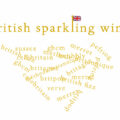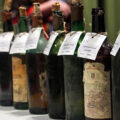Sure, still whites made from Chardonnay in the UK have been around for a while, but now it’s a variety that’s definitely found its voice. While grown in the country for some time, my first encounter with English Chardonnay was the 2013 vintage of the Gusbourne Estate Chardonnay ‘Guinevere’. It was admittedly lime juice on toast, but it was exciting. While trying to be Premier Cru Chablis, it felt new. The searingly high acidity was tempered by a year in oak barrels and another three in bottle, but didn’t suit […]

